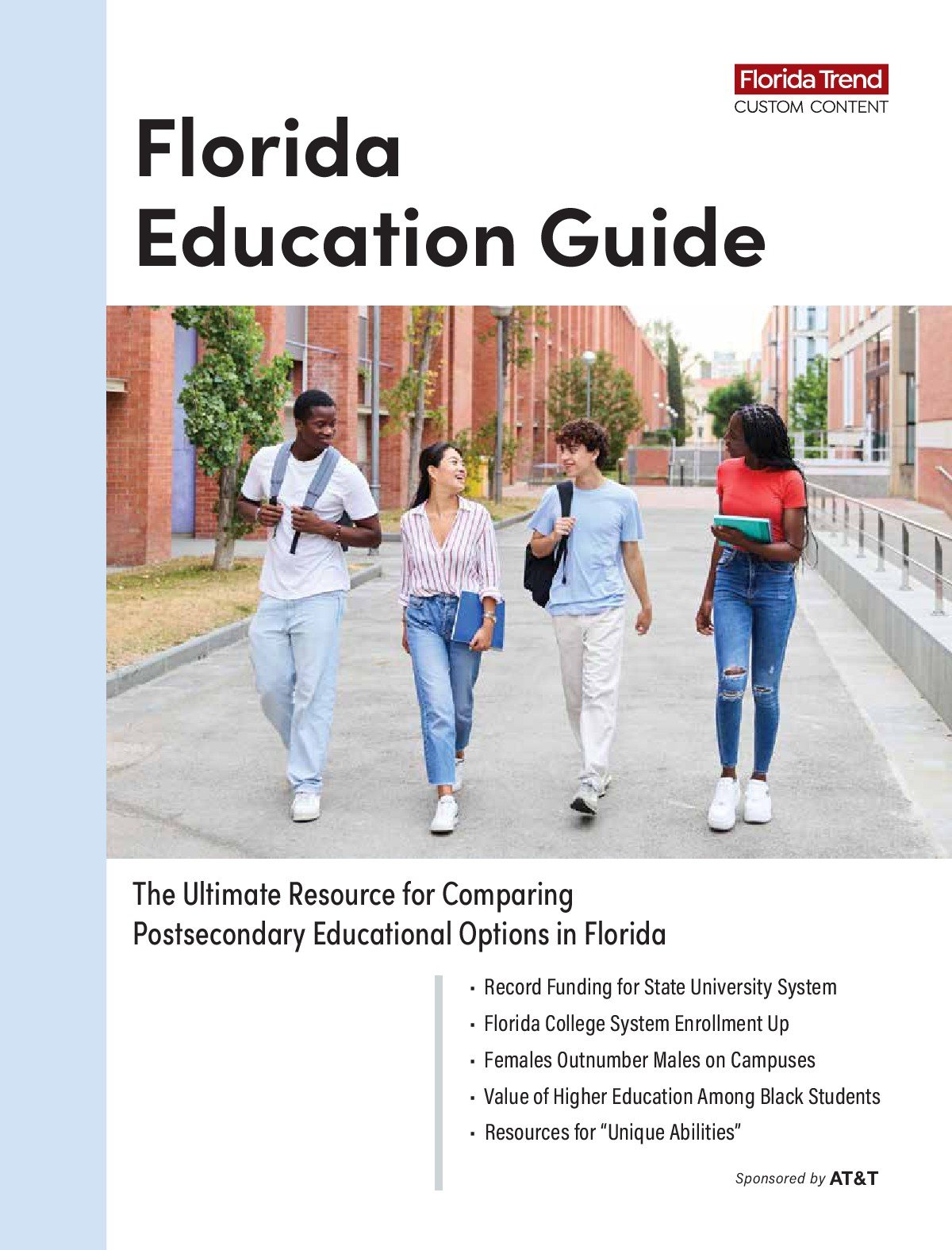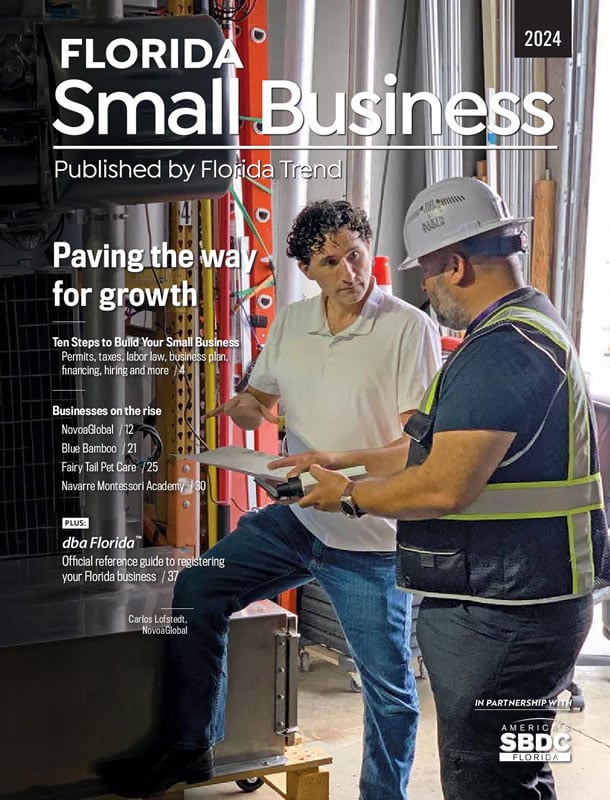The company drained the swamp but never built any homes. Instead, it sold the land, which remained cut-over, dried-out and barren of the birds and fish that depended on the vanished flow of water.
Fifty years later, workers are set to begin cutting and digging on the land once again. A company called Everglades Mitigation Bank has a multi-million-dollar plan to plant mangrove seedlings, fill in the canals and bulldoze the roads -- re-establishing the free flow of water at the site between the Everglades and Biscayne Bay.
The work may look different, but Everglades Mitigation Bank, like Model Land Co. before it, is in the same business: selling swampland.
Everglades Mitigation Bank, a division of Florida Power & Light, is one of a handful of companies in Florida in the business of fixing swamps for profit. The formal name of the industry is wetlands mitigation banking -- a state-approved conservation approach that tries to compensate for developers' destruction of wetlands in one place by creating free-market incentives to preserve them in another.
But in the seven years since the Florida Legislature approved private mitigation banking as a weapon to slow the destruction of wetlands, the approach hasn't lived up to its promise.
There are a few success stories: Florida Wetlandsbank in Pembroke Pines made a healthy profit turning a former melaleuca-clogged trash dump into a pristine swamp. And while most of the 17 other private banks permitted in Florida haven't yet turned a profit, experts like Mark Brown at the University of Florida's Center for Wetlands (See "The Swamp Doctor," below) say they are doing a good job of restoring acres of damaged wetlands to their full function: serving as nurseries and nesting grounds for Florida's fish and birds, sponges for its rain and floodwaters, and recharge areas for its groundwater and drinking water.
But a tedious bureaucracy has the banking system mired in some deep muck of its own. Unsure of potential costs and returns, the entrepreneurs on which the system depends are staying away. "It is literally easier to build a skyscraper in New York," says one South Florida Water Management District official, "than to do a wetlands bank in Florida."
Meanwhile, private banking has proven unsuccessful at stopping the loss of thousands of acres of wetlands in Florida. In 1999, for example, the state lost a net total of some 2,400 acres -- nearly twice as much as it lost in 1996.
Robert N. Kessler, Foster Wheeler Environmental Corp.'s national wetlands banking manager, helped write several states' banking laws, including Florida's. He says while the state was one of the first to authorize banking, it has been slow to make it work. (Foster Wheeler runs one of Florida's private banks, Loxahatchee, in a partnership with the South Florida Water Management District.) "I don't think mitigation banking has been embraced by the state as it was intended," Kessler says, "even though the genesis for it was want-ing to see Florida really do something positive and find a fix for the inadequacies of our wetlands restoration."
Regulatory lapses
Wetlands banking is one variation of an idea that originated in 1972, when Congress passed the U.S. Clean Water Act. Provisions required "mitigation" -- developers had to create new wetlands if they paved others over.
The law couldn't have come too soon for Florida, where builders had drained or filled a third of the state's original wetlands by the 1970s. But the Clean Water Act and state laws that followed it proved ineffective at slowing the destruction of wetlands. For one, regulators frequently failed to enforce the laws. In addition, nearly three-fourths of the wetlands created by developers failed. Finally, many of the mitigation projects the state considered successful back then were later found to be ecologically worthless because they were so small and isolated.
In 1992, a statewide task force made up of regulators, developers and environmentalists recommended that Florida give private mitigation banking a try. The Legislature agreed, passing rules in 1993.
In wetlands banking, the state essentially concedes that economic pressures will result in some wetlands acreage being lost to development. To compensate, it creates incentives for entrepreneurs to preserve blocks of wetlands in the same general region.
For FP&L and other bankers, the incentive is profit. At the old Model Land site, for example, FP&L has the potential to pull in $200 million for restoring a swamp it owned but had no use for.
Here's how it's supposed to work: As FP&L restores the wetland to its natural state, environmental regulators will award the company credits -- the currency in which wetlands bankers trade. The company then sells those credits to one of the other players in the system -- a developer in the same region who needs to destroy wetlands to complete a project.
Developers are able to convince the state that they need to destroy wetlands in about 30% of the cases in which they apply for permission. Regulators let them compensate for the losses in a variety of ways: making them create a wetland in a different area of the project site, letting them buy into a state preservation project -- informally known as "pay to pave" -- or allowing them to purchase credits from a wetlands bank.
The banking option shifts the permitting burden to the banker and can speed up the developer's project in a hurry -- for a price. Builders wanting to mitigate wetlands losses in South Florida now pay between $35,000 and $65,000 a credit.
At the South Florida Water Management District, chief wetlands banking regulator Rob Robbins says the potential market for credits is in the thousands each year -- large enough to support many more banks than the 18 now operating. Not only are there too few banks, he says, but those in business are not always in the most ecologically important areas -- or where development is generating the biggest demand for credits.
Bankers blame barriers to entering the business. Visits to some of their projects shed light on the industry's problems, and also its promise.
A fast talker and dapper dresser with a PR guy by his side, Lew Lautin seems to have a bit of the old swampland salesman in him. He's actually the most successful wetlands banker in Florida -- both economically and ecologically. Lautin's 450-acre Pembroke Pines project, Florida Wetlandsbank, was the first entrepreneurial bank permitted in the state and the first in the nation to sell out credits -- at a considerable profit.
Lautin estimates his company pumped $10 million into restoring the Broward County site, not including marketing, legal and other costs, which he won't reveal. He sold all his credits for a total of $20 million. The site, owned by the city of Pembroke Pines, was filled with garbage and melaleuca when the city approached Lautin's company about turning it into a bank. Today, it's a pristine island of marsh grasses, cypress stands and wading birds -- nestled amid row upon row of the pink-roofed houses, planted palms and industrial parks that define western Broward.
Environmentalists who once warned that the project was ill-advised now laud the bird refuge and public park. Regulators say the bank is ideal because it's situated in a region that's important ecologically but where there's also heavy economic pressure to develop land.
Despite his success, Lautin predicts that on its current course, private banking in Florida is not a sustainable industry. The Pembroke Pines bank -- on a fast track because it was the state's chance to prove its new tool a success -- took three years to permit. His second bank, Panther Island Mitigation Bank in Collier County, took two.
A permitting process that included more than a dozen meetings with state and federal regulators from six agencies, as well as several overnight site visits by all those regulators, cost Panther Island bank some $750,000 in consultants' and lawyers' fees. Says Lautin: "There's no reason this couldn't have taken a year and $200,000, with the same ecological result."
Lautin and other bankers concede the need for strict requirements for ecological benchmarks, financial responsibility and long-term management. But they point to flaws like the disconnect between state and federal regulators: Unlike state government, the federal agencies don't have deadlines that require them to approve banks in a timely manner. It's not unusual for a bank to get state permits, then wait more than a year for final approval from federal regulators -- which include not just the Army Corps, but also the Environmental Protection Agency, Fish and Wildlife Service, National Marine Fisheries Service and Natural Resources Conservation Service.
For example, the Southwest Florida Water Management District has permitted two banks since the state began allowing them in 1993, but neither has received federal approval. One, the 642-acre Boran Ranch bank, got the go-ahead from the district in fall 1997. It's been awaiting the feds' last stage -- the final signature of all federal agencies involved -- for more than a year.
Corps officials say they know their side takes too long and that they're working on a study to find out why. But federal regulators stand by a stringent process that allows a review by all the agencies. "Each of these agencies is charged with specific authorities that assist the Corps in making well-informed and balanced decisions," Corps Jacksonville regulatory division chief John R. Hall wrote in response to a recent report on wetlands mitigation produced by the state Legislature's staff.
Hall also says the state should be talking more about discouraging the destruction of wetlands in the first place. He complains there was little discussion of that in the report, nor a mention of "how such development impacts the public through cost of services, insurance subsidies and the loss of public resources for the sake of ill-advised investments."
Complex and capricious
Another issue for both bankers and developers is the complicated system of awarding credits. Regulators decide how many credits a developer must buy based not on acreage, but on the ecological value of the wetlands being destroyed.
The same holds true for bankers. The number of credits they receive for restoring a site is based on how much they improve it. In addition, developers have to buy credits in the same watershed in which they plan to destroy wetlands. There are also different types of credits. To destroy a freshwater wetland, a developer must buy a freshwater credit. Destroy a saltwater wetland, buy a costlier saltwater credit, and so on.
Consider FP&L's Everglades Bank: For its first 4,200-acre phase, FP&L could receive up to 425 credits -- about a 10:1 acreage-to-credit ratio -- because it preserved a wetland that was already in pretty good shape. For the second 9,200 acres, the company could receive as many as 3,500 credits -- about a 3:1 ratio -- because it will make considerable improvements: pumping water to restore sheet flow from the Everglades to Biscayne Bay, planting islands full of native trees and re-creating habitat for the endangered American crocodiles that swim in the nearby FP&L nuclear plant's cooling canals.
So, what's the formula for figuring out all these credits and ratios? There is none. It's all based on the professional opinions of regulators with at least two permitting agencies -- the state Department of Environmental Protection or water management district, and the Corps -- and often other players, depending on whether local government requires a permit.
With no statewide formula for figuring credits out, the process can seem downright arbitrary. "It often comes down to personal interaction and personalities," says Stephen Collins, who's responsible for selling FP&L's credits. "Sometimes you feel like it comes down to whether you bought the visiting regulator an ice cream sandwich when they wanted a banana."
Even when a banker has permits and credits in hand, finding a market for them can be a political minefield. Of the 200 credits that regulators have released to Collins' bank beginning three years ago, he's sold only 20. One problem: Broward County, a huge chunk of the service area in which FP&L is authorized to sell credits, doesn't want developers destroying wetlands in Broward and making up for it outside the county. Local government has stopped Broward developers from dealing with FP&L -- regardless of state and federal regulators' findings that the bank is relevant to a broader area that stretches halfway into Palm Beach County.
Mitigation banker William Colbert faces the same issue in central Florida. His family's 2,600-acre bank in Volusia County -- home to huge hickory, cedar and magnolia hardwoods as well as vast marsh prairies -- is just 15 miles from Cape Canaveral. The bank has state and federal approval to mitigate projects in Orange, Seminole, Volusia, Osceola or Brevard. Orange County, however, has discouraged developers from mitigating outside its political boundaries. And a group called Friends of Lake Jessup is fighting to keep mitigation projects within the Jessup basin in Seminole County.
Colbert acknowledges that it's "normal and natural" to want to save local wetlands, but he says if the rigorous regulatory process determines a project like his serves the entire region, it should be allowed to. Keeping mitigation within political boundaries, he says, "is politically correct, but ecologically incorrect."
Private bankers also complain they face unfair competition from water management districts' "pay to pave" projects. Those allow developers to mitigate wetlands losses with cash payments for preservation. Because the district projects aren't subject to the same permitting, financial assurances and long-term oversight that the banks are, they are naturally less expensive options.
Net losses continue
As part of a larger wetlands report released this spring, the Legislature's Office of Program Policy Analysis and Government Accountability finds the bankers' complaints are largely legitimate. Among the report's recommendations:
A new, statewide methodology that would ensure the calculations for both developers' impacts and bankers' mitigations are consistent and accurate;
An agreement that would make the water-management districts' projects subject to requirements similar to bankers';
An overhaul of the system that determines the area in which credits can be bought and sold -- perhaps in concert with the state's current review of Florida's growth management laws.
A bill making its way through the Legislature addresses those issues.
Meanwhile, the stakes in crafting sound policy to stop the loss of wetlands are growing. Florida hasn't come close to achieving the goal of "no net loss" that President George Bush declared as national policy in 1988. In the past four years, the state has shown a net loss of more than 8,000 acres of wetlands. That figure does not include destruction of wetlands exempt from mitigation.
Constance Bersok, administrator of mitigation banking for the Florida Department of Environmental Protection, says some loss of acreage is inevitable -- if only because the state exempts small projects such as docks from mitigation. The bottom line is that loss of acreage is not the state's primary concern. Florida's wetland policy, says Bersok, aims for no net loss of "function" -- in other words, it doesn't matter how many acres are lost if the mitigation results in the same amount of wildlife, maintains the same level of water recharge and so on. Measuring all those factors is part of the reason the system is so complicated.
Saving Florida's wetlands will take more than saving the wetlands banking industry. "We have always lacked an overall vision for what a sustainable, green infrastructure for Florida would look like," says Ann Redmond, a DEP wetlands mitigation expert for 12 years before she left in 1997 to join Lautin's company.
Redmond would like to see the state embrace a more comprehensive approach to wetlands protection, perhaps including a ranking system that would give bankers incentives for choosing sites most in need of preservation. "However, the bankers' contribution is only a small piece," Redmond says. "Statewide, the need to make up for wetlands losses is greater than we could ever meet."
The Swamp Doctor
When the Florida Legislature authorized mitigation banking seven years ago, lots of people predicted that profit motive would get in the way of sound ecological results. To find out just how well the banks are working for the environment, Florida Trend enlisted University of Florida Professor Mark Brown to help assess their ecological value.
Brown -- he's the "Swamp Doctor" in Miami Herald columnist Al Burt's latest book, "Tropic of Cracker" -- is a professor of environmental engineering sciences at UF and the associate director of the university's Center for Wetlands. He's researched wetlands in Florida and around the world for 20 years and enjoys the respect of both environmentalists and private industry, having constructed wetlands for the phosphate industry and others.
Brown was an early critic of the "postage-stamp" mitigation projects favored by regulators in the past. After analyzing six private mitigation banks for TREND, he concluded that wetlands banking is an improvement over Florida's previous mitigation policies. Banks, he says, are more likely to show long-term success. And they create larger, interconnected systems of wetlands that better perform their jobs of supporting wildlife and recharging water.
In addition to being better for the environment, the large banks are much easier to monitor than thousands of on-site projects, he says. "All in all, wetlands mitigation banking results in a net ecological benefit," Brown concluded in his report. "Both in the short run, as degraded wetlands and landscapes are enhanced, and in the long run as preservation areas are connected and wild lands are preserved for future generations of Floridians."
Brown tromped through banks across the state, measuring muck and interviewing the bankers' biologists. He found that in almost every case, "the land within the banks has higher ecological value than it did prior to being made a bank."
In several cases, the restored wetlands serve as connectors to other ecologically significant tracts, such as public preserves. Though varying in size from a few hundred acres to a few thousand, all are considerably larger than the ineffective mitigation projects found in places like highway cloverleaf exchanges and Wal-Mart parking lots.
The banks aren't perfect. In one case, Brown predicts that a rush to restore a wetland in what has become a mature forest will result in significant loss of ecological function. The bank in question was a forested wetland that had been drained for some years. A healthy ecosystem of mixed hardwoods had, over time, replaced wetlands species. Reflooding the vast area, he says, "probably will result in a significant loss of ecological functions as both wetland and upland trees that were adapted to dryer conditions are flooded out and die."
At several banks, Brown says the effort to replace invasive species such as Brazilian pepper trees with native flora may be overzealous: For the foreseeable future, it could hurt rather than help wildlife, drainage and other wetland functions.
In one instance, a bank created on a family's large tract will be maintained in perpetuity by family members, who in turn keep rights to hunt and harvest timber. "It somehow seems unfair that this family stands to reap millions in profits and yet gets to keep the land, maintaining sole right to trespass and the ability to disrupt ecological functions on upland portions as they harvest the timber," Brown says.
But he says he'd rather see the land hunted and harvested than developed. "In exchange," he says, "society preserves several thousands of acres of an ecologically valuable and well-positioned tract that will benefit tens of thousands of acres of environmentally sensitive lands because of its position as a connector between two isolated preserves."
Oversight is crucial
In most of the mitigation banks Brown visited, bankers and regulators are enhancing degraded wetlands rather than constructing new ones. A brand new wetland was being created in only one instance. Brown predicted that bank would result in a functioning wetland long-term -- as long as stringent regulatory oversight continues.
Brown talked to bankers around Florida about the forest of federal, state and, in some cases, local environmental agencies involved in all stages of the permitting process. But he says he doesn't favor relaxing the rules. "To ensure mitigation banking results in net benefit to the people and ecosystems of Florida, it is imperative that the stringent level of regulation presently in place remain in place," Brown says. "Some of the bankers seem to be calling for less regulation, in essence saying 'trust me.' I think Florida has too much to lose to not make sure wetland mitigation banking is done correctly."
Why Wetlands Matter
WILDLIFE: Some 80% of our coastal fisheries depend on wetlands for spawning, nurseries and food. Both coastal and inland wetlands also provide essential breeding, nesting, feeding and predator escape habitats for millions of waterfowl, other birds, mammals and reptiles. More than a third of the 564 plant and animal species listed as threatened or endangered in the U.S. use wetlands habitats during their life cycle.
HEALTHY WATER: Wetlands also serve as natural reservoirs and groundwater recharge areas. And they're important in protecting the quantity and quality of groundwater used as a source of drinking water. Meanwhile the presence of wetlands in a flood plain can reduce flood peaks by 80%. The natural filtering, erosion and sediment control capabilities of wetlands contribute to the overall improvement of water quality.
Drying Up
Florida was once almost all wetlands. Over the years, nearly half of them have been filled in for farms or paved over for parking lots.
In the 1980s, the state got serious about stopping the losses. Florida required developers to make up for destroying wetlands by creating new ones elsewhere on-site. Turns out, those projects failed some 75% of the time. About 35% were never even initiated.
The past 10 years have seen considerable improvement, but losses continue -- due to both inadequacies in the permitting system and exemptions. Meanwhile various agencies involved in permitting the losses record data inconsistently, making it impossible for policy-makers to get a good handle on the losses. For a partial look at the problem, at right are water management districts' and the Department of Environmental Protection's reported acres destroyed vs. acres created over the past four years.












